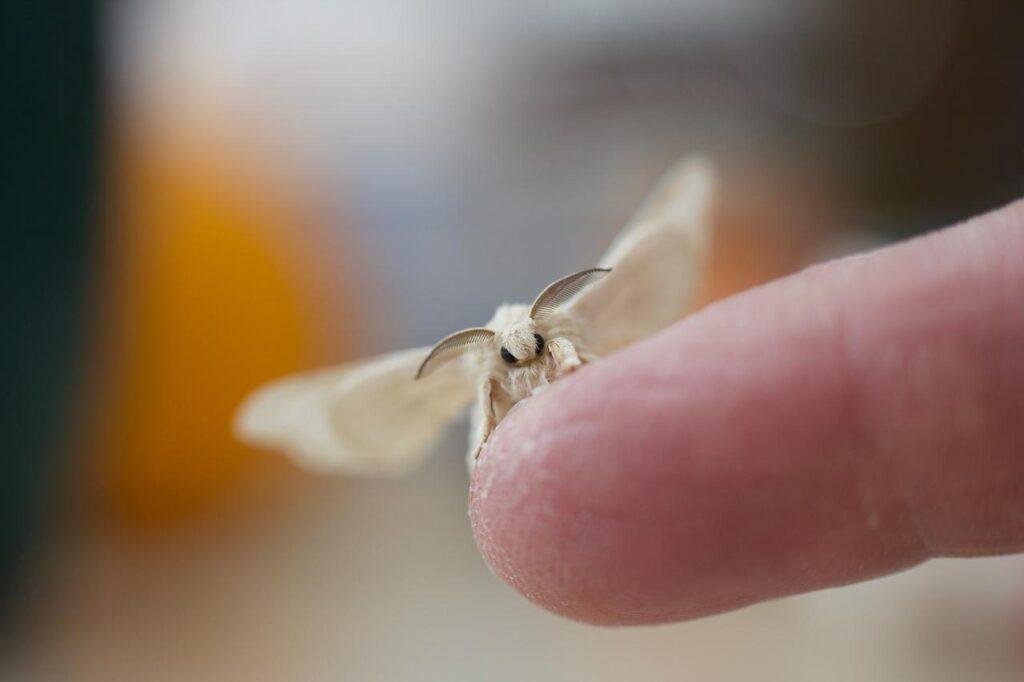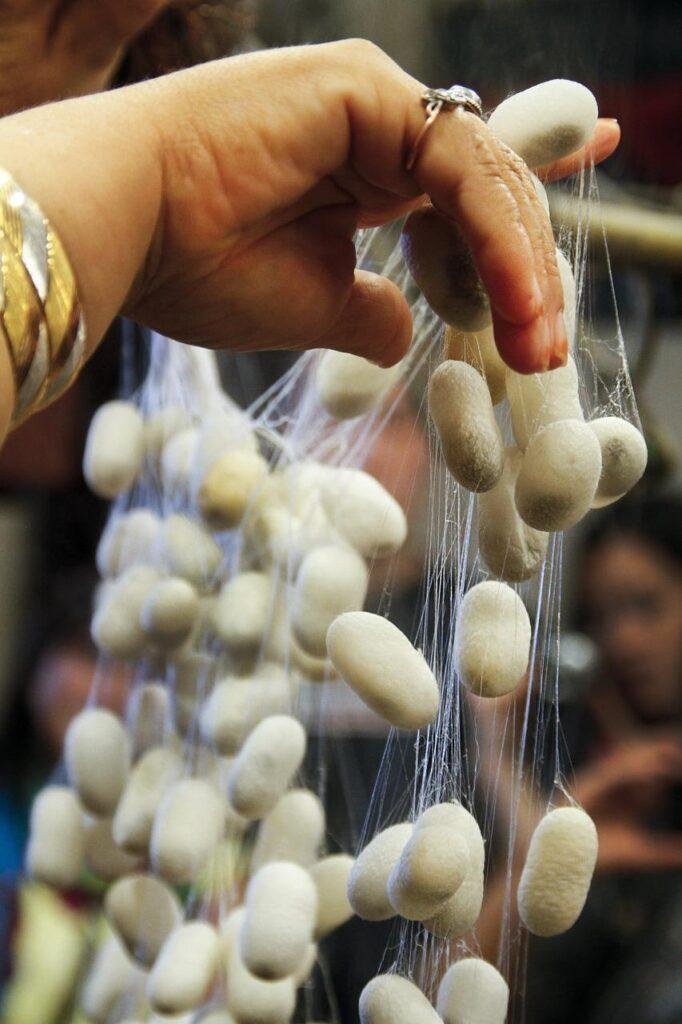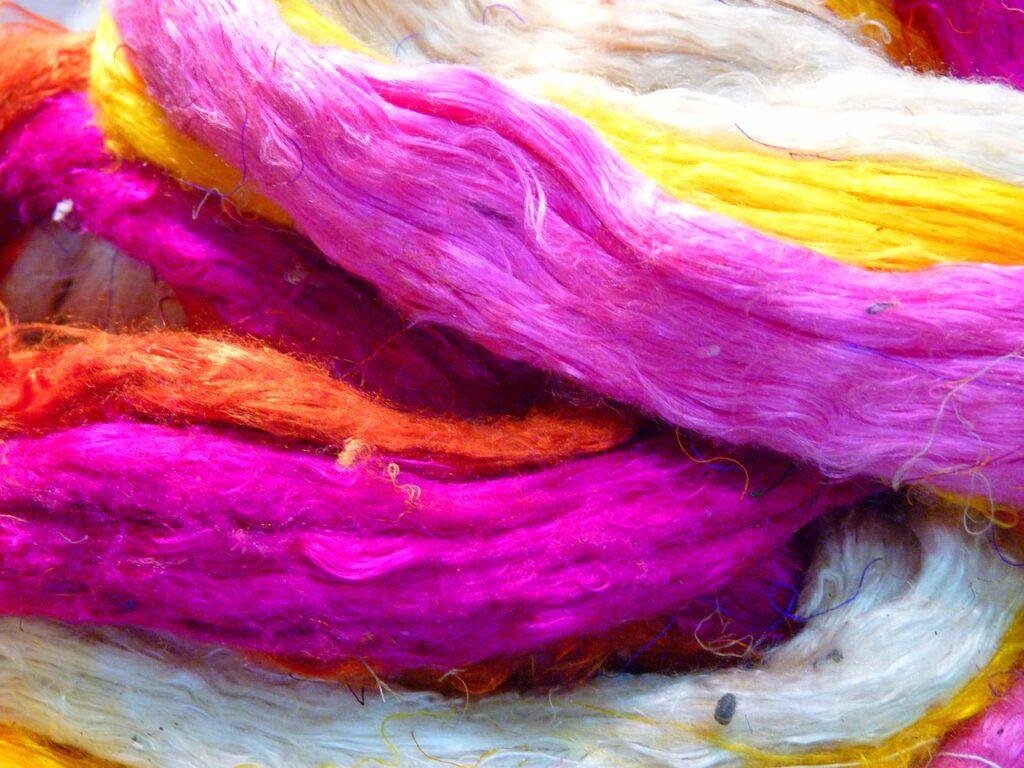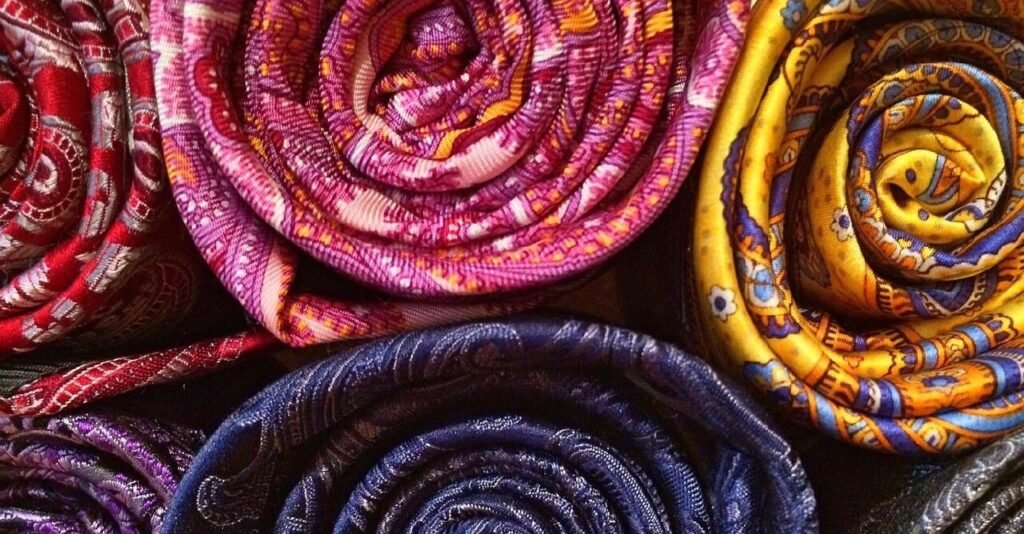




Today, it is sometimes difficult to tell the difference between real silk and synthetic fabrics which sometimes imitate it to be mistaken.
The real question to ask is “natural silk or synthetic silk?” because some unscrupulous traders do not hesitate to answer that their products are made of “Indian silk” while not ignoring that they are selling you “polysilk” or more precisely POLYESTER. FYI, there is also a so-called “vegetable” silk which is made from eucalyptus pulp mixed with a solvent and called Lyocel.
GENUINE INDIAN SILK is not synthetic but NATURAL. It is of animal origin and comes from the breeding (sericulture) of the silkworm or mulberry bombyx. There is also in India the silk “Tussah” or wild silk which comes from a worm which feeds not on mulberry leaves but on oak leaves and which is not farmed. Tussah silk is found in the northeastern states of India including Assam. It is from the cocoon formed by the worms that the silk is extracted, a cocoon producing up to 1000m of a very fine and very solid thread.
Real silk is thermo-regulating which means it keeps you warm in the winter and keeps you cool in the summer. It is a very good insulator. If you sweat in a silk dress, this one is probably polyester. Our grandmothers always wore a silk scarf in the winter to guard against sore throats. Real silk does not cause allergies; it is soft and pleasant to the touch. To tell the difference between natural silk and synthetic silk, several methods can be used:
– By burning a silk thread, we see that the flame does not propagate. The “little ball” formed by the combustion turns into powder between the fingers. The smoke from combustion is clear and the smell from it resembles that of a burnt hair. The “polysilk” ignites and smells of burnt plastic; the “little ball” remains rigid under the fingers and does not crumble.
– By exposing a piece of silk to light, and especially in movement, you can see reflections of colors and a vibrancy that is particular to it. The synthetic fiber has mostly white reflections. Real silk has an easily recognizable shine and luster.
– Real silk has the particularity of creasing and uncreasing naturally: by crumpling it, it wrinkles but this will not last. Polyester will not wrinkle.
– The natural silk “makes noise”: if you take it between two fingers or if you rub it on itself, the silk emits a slight characteristic noise that you can even “hear” in your fingers. The “polysilk” remains silent.
– Finally, genuine silk burns in the sun when wet, so we always advise you to dry our silk pieces in the shade. Once “burnt” by the sun, it tears very easily, a bit like cigarette paper.
As for the price of real silk in India, even if it remains much lower than in France, it remains a substantial investment for people of modest means. Natural silk is a noble and expensive material and the wearing of a real silk sari remains reserved for special occasions. For everyday use, the famous “polysilk” or synthetic silk is used because it imitates silk very well, is not very fragile and much less expensive.
